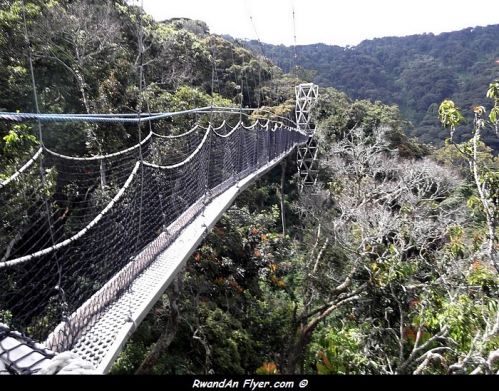National Geographic Travel names Nyungwe Forest on its 20 Best of the World list
22/11/2013
Ranking : HERE
Robert Earle Howells
How does a nation overcome the gut-wrenching stigma of a genocide, now two decades past, and proclaim to the world that it is a safe and surprising place to visit? For Rwanda, one strategy is to highlight a tract of unspoiled mountain rain forest rife with chimpanzees and a dozen other primates plus hundreds of species of birds—namely, Nyungwe National Park, in the southwestern corner of the country.
Nyungwe, which became a national park in 2005, exemplifies the farsightedness of a government that is channeling aid money toward preserving the best of Rwanda’s natural beauty, while bringing in tourist dollars that benefit surrounding communities. An example is the USAID-funded Nyungwe Nziza (Beautiful Nyungwe) project, which recently built a canopy walkway above a forested canyon—a thrilling perspective on the park and its residents.
Chimps are the star attraction in Nyungwe, though they’re not as readily watchable as the famed “in the mist” mountain gorillas farther north in Virunga National Park. Far easier to view are colobus monkeys. The world’s largest community of them lives in Nyungwe. The park hasn’t yet gained renown among birders, but it will. Almost 300 species abide here, including showboats like the oversize, clown-headed Ruwenzori turaco.
“Nyungwe stands out among Africa’s intact montane rain forests for its size and diversity,” says conservationist Bill Weber, who with his wife, Amy, pioneered the gorilla tourism project in Virunga. “It’s a place where people can spend several days and really get to know a rain forest, having different experiences each day.” Visitors can hike trails to peaks and waterfalls, and meet locals in Banda Village near the park entrance. Should one ask residents whether they are Tutsi or Hutu, the answer will almost certainly be “We are Rwandan.”
SOURCE : National Geographic
A découvrir aussi
- First Indians Pilgrims arrive at Kibeho
- Kenya and Rwanda enhance cooperation in the Tourism sector
- Travel advice at the DR Congo - Rwanda boarder

